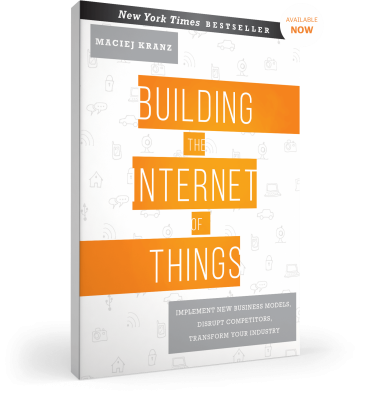This week at the Internet of Things World Forum, we’ve been hearing a lot about the transformational value of the Internet of Things (IoT) across many industries – manufacturing, transportation, agriculture, smart cities, retail, and finance. So many new solutions are on display that help organizations either save or make money. But in healthcare, IoT can actually do more than that, it has the potential to save lives.
You may be thinking, “Of course—wearables, remote monitoring, performance tracking. These concepts have been around for a while now.” And yes, these technologies and devices are already working to improve health and fitness. One recent development, however, has really captured my attention because of its potential to help with early detection of breast cancer. That’s the idea behind the connected bra—dubbed the” iTBra” by its inventor, Rob Royea, CEO of Cyrcadia Health. With embedded temperature sensors, this new kind of wearable technology tracks changes in temperature in breast tissue over time. It uses machine learning and predictive analytics to identify and classify abnormal patterns that could indicate early stage breast cancer. And women will be glad to know that they just need to wear the iTBra for 2 to 12 hours once a month as they go about their daily activities—there’s no painful squashing or prodding or radiation involved.

The iTBra fits comfortably under virtually any normal bra and can transmit results to a smartphone.
This technology marks a vast improvement over traditional mammography, which generally doesn’t detect the presence of cancer until it is in Stage 3 or 4. It is also much more accurate than mammography, which produces a high number of both false-positive and false-negative results. Currently, more than 70 percent of biopsies that are done as a result of a suspicious mammogram turn out to be non-cancerous tissue. And in women with dense breast tissue, mammograms miss the presence of cancer more than 50 percent of the time. Because the iTBra relies on different detection technology, its false negative rate has so far been 17.3 percent for all tissue types—an improvement for all women, but especially for those with dense tissue.

Connected bra technology is many times more accurate than mammography in detecting the presence of cancer.
“Detected” is a new short documentary film sponsored by Cisco that shows the development of the iTBra, from the seed of an idea to its acceptance for clinical trials. The power of this documentary is not only about the ground-breaking idea itself, but also about the innovation process. I have been a keen observer and practitioner of innovation and co-innovation for years, and therefore I appreciate how the film realistically depicts the entrepreneurial struggle—a great idea, some false starts, some wrong turns. We also see Rob Royea’s grit and determination as he doggedly persists through obstacles, builds a coalition of the willing across the globe, and spreads his enthusiasm and passion about the project to people around him.

Rob Royea, right, discusses circuitry design with a development partner in Israel.
The connected bra idea is already so powerful by itself; but this is just a start. As Rob Royea says in the film, “What if you can screen three million people in Asia in a single year? What if you can create this mega database through the Internet, that can analyze how some people, versus others, have cancer?“
This is where IoT, in combination with the cloud, machine learning, and analytics capabilities, can truly become transformative. Mammograms—and the radiology expertise needed to interpret their results—are still out of reach for billions of women, especially in poor countries. Now, with inexpensive, non-invasive technology, you can now screen millions of women who have never had access to screening before. And in the process you can gather massive amounts of anonymized data that can help us research and hopefully better understand what factors contribute to a woman getting breast cancer in the first place. In a world where more than half-a-million women die from breast cancer each year, such connected IoT solutions can not only help cancer detection, but also cancer prevention.
The connected bra is just one of the reasons IoT in healthcare is especially exciting to me. Combined with rapid advances in areas ranging from bio- and DNA engineering, to robotics, prosthetics, and remote care, IoT is poised to dramatically improve many aspects of our lives—enhancing not only how long, but also how well we live. This is why I believe it is so important to rally behind entrepreneurs such as Rob Royea. We should support the efforts of current innovators and create incentives and programs for new ventures in the IoT healthcare field. Because in healthcare, the stakes are not just about efficiency or productivity; they’re about our lives.
This article was originally published on Cisco Innovation Blog

Available Now
Building the Internet of Things by Maciej Kranz provides front-line business decision makers with a practical handbook for capitalizing on this latest transformation. Focusing on the business implications of Internet of Things (IoT), this book describes the sheer impact, spread, and opportunities arising every day, and how business leaders can implement IoT today to realize tangible business advantages.